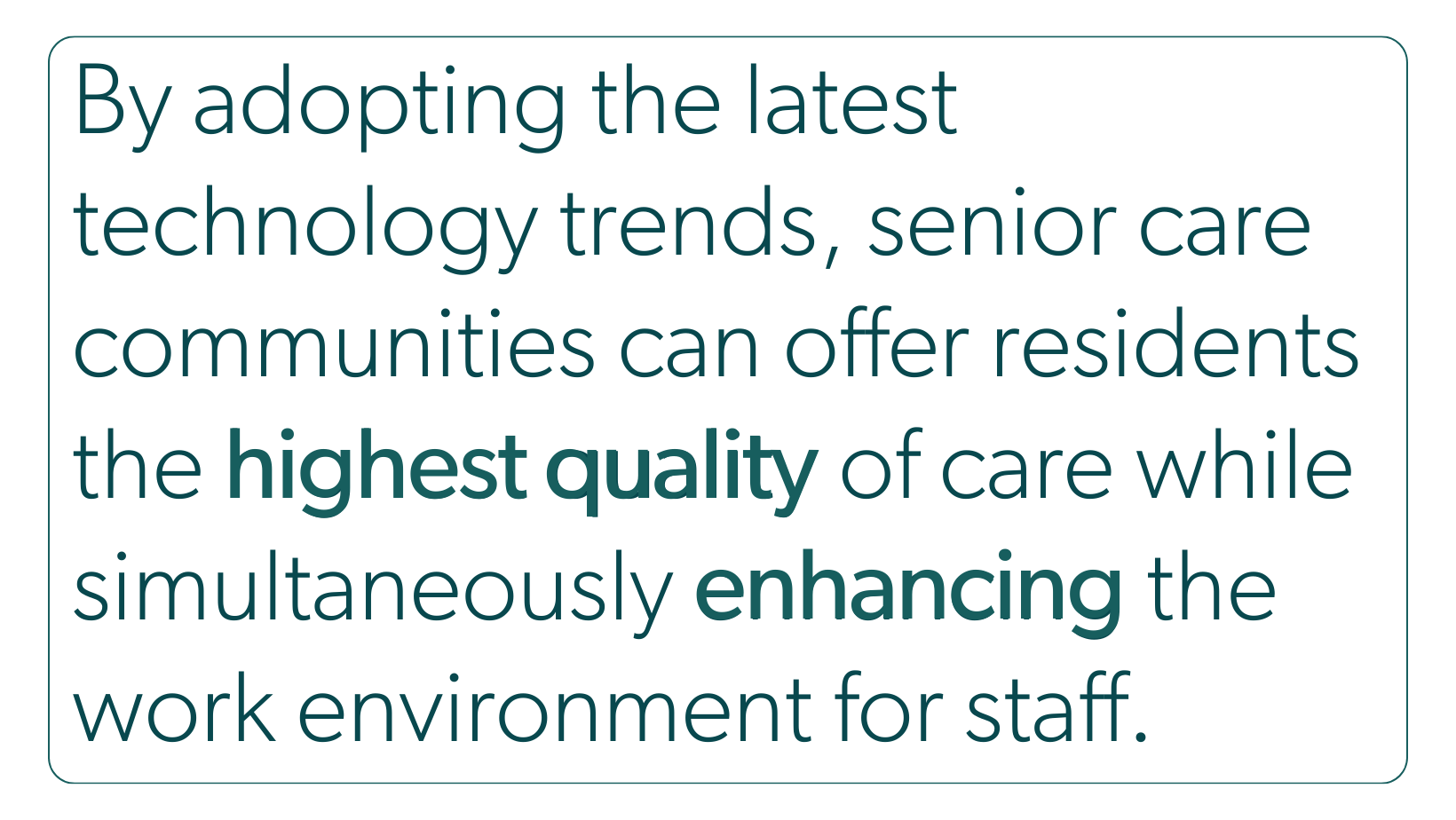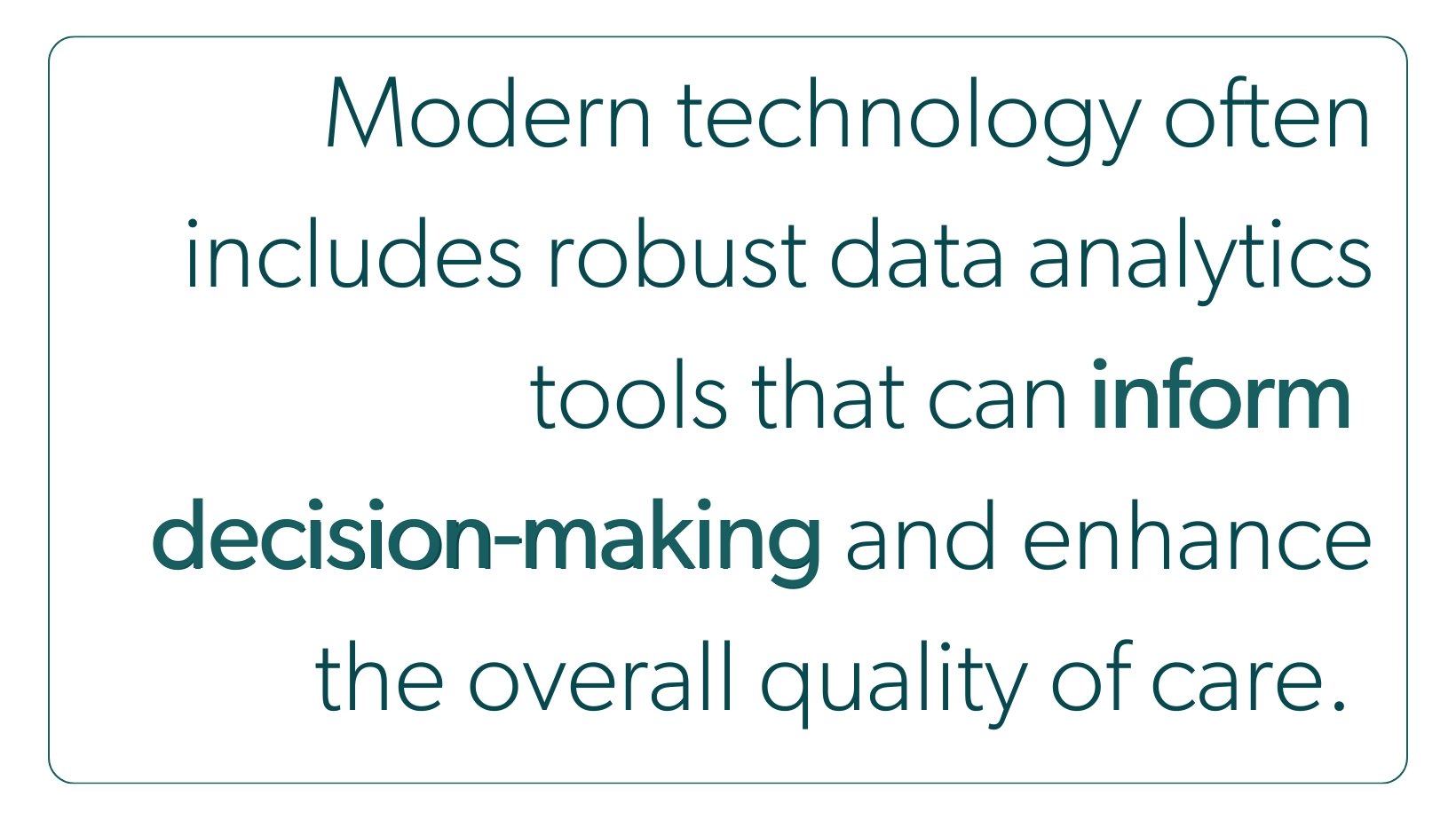In today's rapidly evolving landscape of senior care communities, the role of technology has undergone a profound transformation. With the advent of cutting-edge innovations, the senior care industry now possesses powerful tools and resources to enhance resident care, streamline operations, and improve overall facility management. From electronic health records (EHRs) to telemedicine platforms, the potential benefits of these modern technological solutions are undeniable.
Yet, amid this wave of innovation, a crucial question arises: How can senior care communities effectively blend the power of new technology with the tried-and-true methods that have served residents for generations? We’ll explore that challenge — the art of striking the right balance between the old and the new, between traditional practices and modern tech advancements.
In a world where technology transforms senior care, this blog is your guide to ensure your facility evolves while preserving the essential elements of compassionate and effective senior care.
The evolving landscape of senior care tech
The technological landscape within senior care has evolved at an astonishing pace. Traditional record-keeping, communication, and resident monitoring methods have given way to state-of-the-art solutions. EHRs have streamlined medical documentation, allowing for more accurate, efficient, and secure record-keeping. Telemedicine platforms have revolutionized healthcare delivery by enabling remote consultations, reducing the need for physical visits, and providing timely medical attention.
In addition, Internet of Things (IoT) devices and smart sensors have enabled real-time monitoring of residents' health and safety. Wearable devices can track vital signs, detect falls, and even predict potential health issues, enhancing the quality of care and resident safety.
These innovations have had a profound impact on resident care and facility management. By digitizing medical records, healthcare providers can access critical patient information instantly, leading to faster and more informed decision-making. Telemedicine allows residents to receive medical consultations without leaving their rooms, ensuring timely care and reducing the risk of exposure to contagious illnesses.
The need to stay up-to-date
Senior care communities must stay updated with tech trends in this swiftly evolving landscape. Failing to do so can result in missed opportunities to improve resident care, increase operational efficiency, and ensure staff satisfaction. Staying current with technology is not merely an option; it's a necessity to remain competitive and relevant in the senior living industry.
By adopting the latest technology trends, senior care communities can offer residents the highest quality of care while enhancing the staff's work environment. However, achieving this requires a thoughtful approach that balances the benefits of new technology with the need to preserve the comfort and familiarity that seniors value.

Advantages of traditional technology
Familiarity and comfort
Traditional technology, often associated with pen-and-paper methods or legacy systems, can offer a sense of familiarity and comfort to both residents and staff. Seniors who may not be tech-savvy find solace in the routines they've grown accustomed to over the years.
Reliability
Legacy systems have proven reliable and resilient. They often have a track record of serving the basic needs of senior care communities.
Minimal learning curve
Traditional methods require little to no training for already familiar staff, saving time and resources spent on tech training programs.
Benefits of integrating modern tech solutions
Enhanced efficiency
Modern technology brings automation and efficiency to various aspects of senior care. Tasks like medication management, scheduling, and record-keeping can be streamlined, reducing the margin for error and freeing up staff for more resident-focused activities.
Improved resident care
New technology, such as EHRs and telemedicine platforms, can significantly improve the quality of resident care. Quick access to medical records, remote consultations with specialists, and real-time health monitoring improve health outcomes.
Staff empowerment
Integrating modern tech solutions is not just about the tools, it's about empowering your staff. It provides them with the means to perform their jobs more effectively, leading to higher job satisfaction and reduced burnout. This empowerment is a key benefit of embracing modern technology in senior care.
Drawbacks of relying on one type of tech
Resistance to change
Exclusive reliance on traditional technology may encourage tech-savvy staff to join the workforce. It can also hinder the adaptation of senior care communities to the evolving needs of residents and the industry.
Missed opportunities
Overlooking modern tech solutions is not just a missed chance for improvement, it's a risk. It can result in missed opportunities for improved care, operational efficiency, and cost savings. The senior care industry is evolving, and communities that fail to adapt risk falling behind. This sense of urgency underscores the importance of embracing a diverse range of technologies in senior care.
Limited data utilization
Traditional methods may limit the utilization of valuable resident data for insights and improvements. Modern technology often includes robust data analytics tools that can inform decision-making and enhance the overall quality of care.

The success of senior care technology integration hinges on finding the right balance between old and new. It's not a choice between the two, but a strategic blend that combines the familiarity and reliability of traditional methods with the efficiency and innovation of modern technology.
Technology is a transformative force in the senior living industry, revolutionizing resident care and facility management. While traditional technology has its merits, the integration of modern solutions has emerged as a key driver for enhanced efficiency, superior resident care, and empowered staff.

